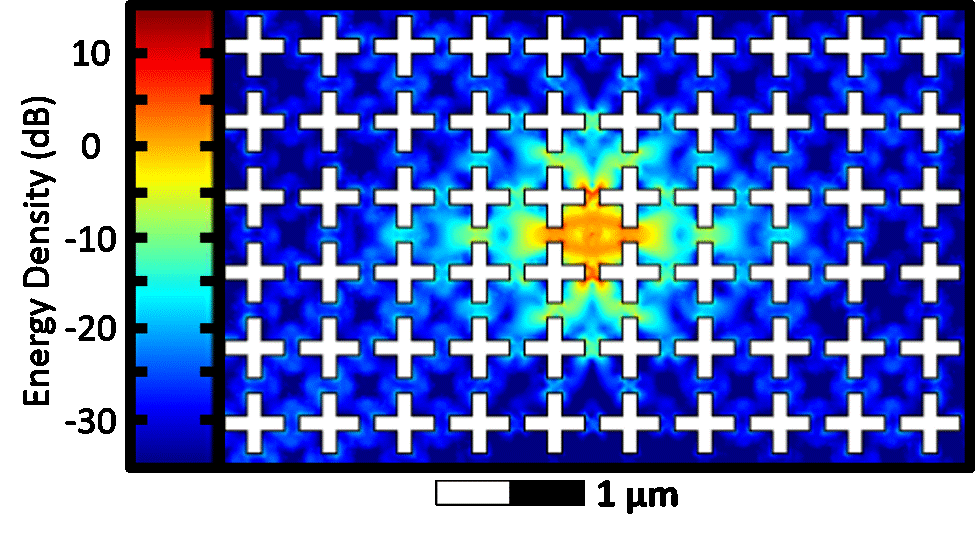Quantum coherent devices hold immense promise in fields ranging from high fidelity detectors to quantum information processing. However, the utility of these devices depends on how long they can be maintained in a pure quantum state, otherwise known as their lifetime.
LLNL has developed a method of extending device lifetimes by imprinting into the device a shape that excludes specific vibrational modes, otherwise known as a phononic bandgap. Eliminating these modes prevents one of the primary energy loss pathways in these devices.
LLNL’s new method enhances the coherence of superconducting circuits by introducing a phononic bandgap around the system’s operating frequency. Phononic bandgaps are a meta-material composed of repeating unit cells designed to block certain vibrational frequencies. A vibration propagating through the structure at the bandgap frequency will destructively interfere with shaped reflections. The spacing between unit cells is approximately half the wavelength at the bandgap frequency at this condition. This is the ideal frequency structure for quantum information as it blocks resonant phonon emission around the qubit frequency while leaving the low energy density of states unperturbed to maintain thermal conductivity at cryogenic temperatures. Phononic meta-materials with bandgaps in the relevant few gigahertz regime have previously been demonstrated.
LLNL’s method of patterning circuits with phononic bandgaps can be used to increase lifetimes of quantum coherent devices. Rather than changing the device properties by increasing the size of features to reduce the electric field participation in the regions of the defects (surfaces and interfaces), LLNL’s technology can be applied to most device designs. The technology can be implemented to mitigate undesired energy loss to the environment and to minimize loss of fidelity for the quantum coherent devices. Specifically, this method can be used to reduce the energy loss in devices such as transmon qubits, superconducting resonators, etc, which suffer from quantized sources of loss (such as Two-Level Systems).
Y.J. Rosen, M.A. Horsley, S.E. Harrison, E.T. Holland, A.S. Chang, T. Bond, and J.L. DuBois, Protecting superconducting qubits from phonon mediated decay, Appl. Phys. Lett. 114, 202601 (2019), doi: 10.1063/1.5096182.
This method increases the coherence times of various high-quality factor sensors and qubits without compromising the coupling to the lower energy phonons required to thermalize devices. It can be easily integrated with most existing planar devices, including other coherence enhancing schemes such as Purcell filters and quasiparticle traps. For radio frequencies, this design can be easily added to existing patterns with electron-beam lithography. It can be used in, beneath, or around the device to help protect it against decohering effects. Depending on geometry, it is predicted to increase coherence times by over an order of magnitude.
This technology has applications ranging from quantum bits to microwave kinetic inductance detectors. It has the potential of preventing dissipation in any system where a primary source of dissipation is two-level systems. Planar superconducting resonators used to readout of quantum systems will also benefit, whether being used in continuous mode, fast pulse, or single photon operations modes.
Simulations have shown the potential of this technology. Qubits and planar superconducting resonators with phononic bandgaps patterned around them will increase their lifetimes.
US Patent 10,586,908 has been granted for this technology


